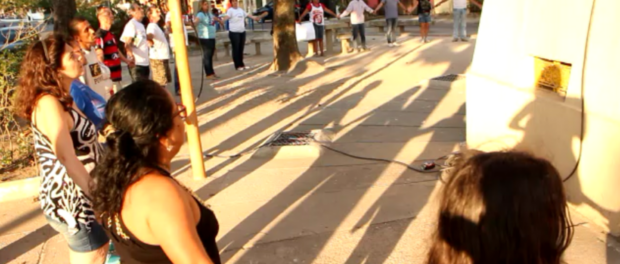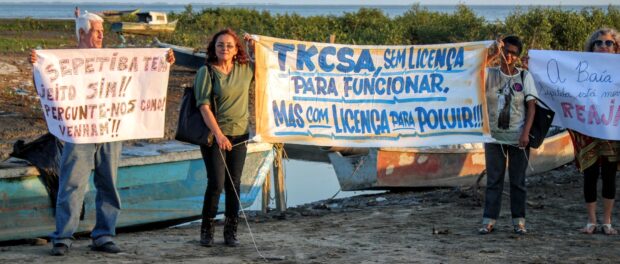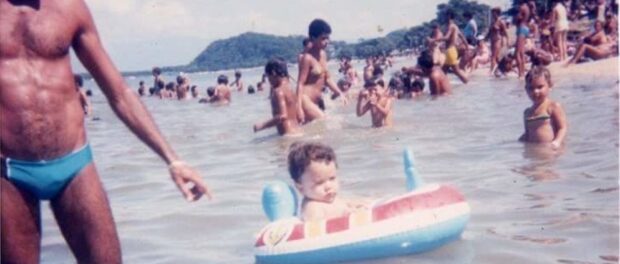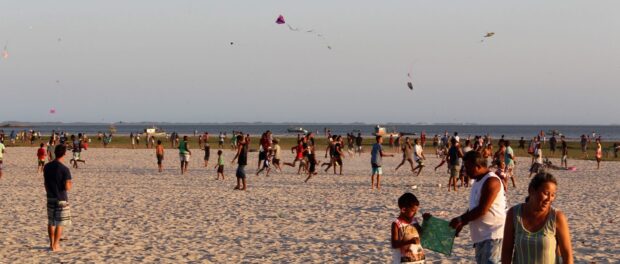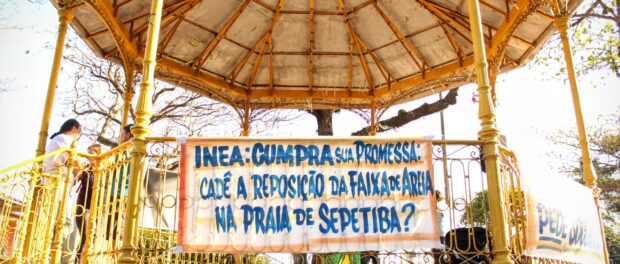
Last Sunday, July 31 residents of Rio de Janeiro’s West Zone neighborhood Sepetiba joined together in a symbolic “hug” of the Sepetiba Bay to mobilize stewardship for the bay’s environment and community.
The 40 residents and allies in attendance gathered at the historic Sepetiba bandstand. Diverse groups including C.O.R.E.S. (Commission for the Revitalization of Sepetiba), the Boto Cinza Institute for protecting dolphins, the Sepetiba Ecomuseum, Sepetiba People’s Network, Baía Viva and the Central Baptist Church of Sepetiba joined forces over their shared concern for the bay. Representatives from each group gave speeches and the event culminated in the “hug” as participants held hands in a circle around the bandstand and sang the national anthem.
“The hug’s objective is to unite movements, institutions, residents and fishermen to hug Sepetiba and hold the government accountable for their unkept promises,” explained Thiago Cruz, of the Sepetiba People’s Network.
“We are in the moment of the Olympics and an upcoming election. Right now, all eyes are looking towards Rio de Janeiro. Because of the Olympics, it was promised that the Guanabara Bay would be cleaned up. If it wasn’t possible to do anything there even after it was promised, imagine how it will be in a forgotten neighborhood that no one can even locate on a map unless we speak out.”
Residents held banners stating “INEA [the State Environmental Institute], keep your promise: Where is the sand replenishment on Sepetiba Beach?” and “TKCSA, not licensed to operate but licensed to pollute!” They also expressed that they would like to see the fulfillment of Mayor Eduardo Paes’ promise to build 450 kilometers of bike paths by 2016.
Known during the 1970s and 80s as the Copacabana of Rio’s West Zone, the Sepetiba beach was populated primarily by fishermen and summer homes. Residents watched as the construction of the port of Itaguaí in 1982 transformed Sepetiba’s beaches into a swamp unsafe for swimming.
The Docas Port Authority oversaw the construction of the port. To deepen a canal they dug up 20 cubic meters of material and threw it irresponsibly back into the bay. The material has continually washed onto Sepetiba’s shores ever since, covering them in mud. Along with pollution from the zinc company Ingá Mercantil (closed in 1998) and the highly controversial steel processing plant TKCSA, the port devastated the artisanal fishing and tourism industries in Sepetiba.
The Federal Court ruled that the Docas company should pay remediations, but Sepetiba residents stated that the funds have been invested outside of their region. “Until today Docas hasn’t paid all of the indemnities and hasn’t taken all of the mitigating measures they were supposed to. That is what we are protesting now,” says C.O.R.E.S. member Sergio Pinto.
He continues: “Since we can’t undo the past, we want to see upgrades for our shore, like a bike path, sidewalk, kiosks, bathrooms. Everything that you see in the South Zone in Copacabana and Ipanema we deserve here as well.”

